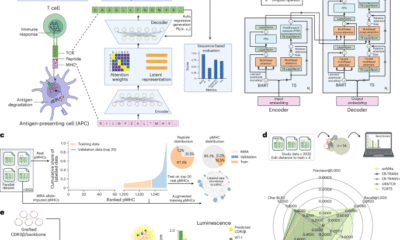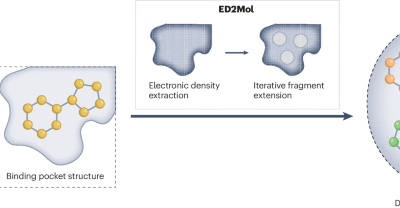AI Research
The STARD-AI reporting guideline for diagnostic accuracy studies using artificial intelligence

Reichlin, T. et al. Early diagnosis of myocardial infarction with sensitive cardiac troponin assays. N. Engl. J. Med. 361, 858–867 (2009).
Hawkes, N. Cancer survival data emphasise importance of early diagnosis. BMJ 364, l408 (2019).
Neal, R. D. et al. Is increased time to diagnosis and treatment in symptomatic cancer associated with poorer outcomes? Systematic review. Br. J. Cancer 112, S92–S107 (2015).
Leifer, B. P. Early diagnosis of Alzheimer’s disease: clinical and economic benefits. J. Am. Geriatr. Soc. 51, S281–S288 (2003).
Crosby, D. et al. Early detection of cancer. Science 375, eaay9040 (2022).
Fleming, K. A. et al. The Lancet Commission on diagnostics: transforming access to diagnostics. Lancet 398, 1997–2050 (2021).
Whiting, P. F., Rutjes, A. W., Westwood, M. E. & Mallett, S. A systematic review classifies sources of bias and variation in diagnostic test accuracy studies. J. Clin. Epidemiol. 66, 1093–1104 (2013).
Glasziou, P. et al. Reducing waste from incomplete or unusable reports of biomedical research. Lancet 383, 267–276 (2014).
Ioannidis, J. P. et al. Increasing value and reducing waste in research design, conduct, and analysis. Lancet 383, 166–175 (2014).
Lijmer, J. G. et al. Empirical evidence of design-related bias in studies of diagnostic tests. JAMA 282, 1061–1066 (1999).
Irwig, L., Bossuyt, P., Glasziou, P., Gatsonis, C. & Lijmer, J. Designing studies to ensure that estimates of test accuracy are transferable. BMJ 324, 669–671 (2002).
Moons, K. G., van Es, G. A., Deckers, J. W., Habbema, J. D. & Grobbee, D. E. Limitations of sensitivity, specificity, likelihood ratio, and Bayes’ theorem in assessing diagnostic probabilities: a clinical example. Epidemiology 8, 12–17 (1997).
Bossuyt, P. M. et al. The STARD statement for reporting studies of diagnostic accuracy: explanation and elaboration. Ann. Intern. Med. 138, W1–W12 (2003).
Bossuyt, P. M. et al. STARD 2015: an updated list of essential items for reporting diagnostic accuracy studies. BMJ 351, h5527 (2015).
Cohen, J. F. et al. STARD 2015 guidelines for reporting diagnostic accuracy studies: explanation and elaboration. BMJ Open 6, e012799 (2016).
Cohen, J. F. et al. STARD for Abstracts: essential items for reporting diagnostic accuracy studies in journal or conference abstracts. BMJ 358, j3751 (2017).
Korevaar, D. A. et al. Reporting diagnostic accuracy studies: some improvements after 10 years of STARD. Radiology 274, 781–789 (2015).
Korevaar, D. A., van Enst, W. A., Spijker, R., Bossuyt, P. M. & Hooft, L. Reporting quality of diagnostic accuracy studies: a systematic review and meta-analysis of investigations on adherence to STARD. Evid. Based Med. 19, 47–54 (2014).
Miao, Z., Humphreys, B. D., McMahon, A. P. & Kim, J. Multi-omics integration in the age of million single-cell data. Nat. Rev. Nephrol. 17, 710–724 (2021).
Bycroft, C. et al. The UK Biobank resource with deep phenotyping and genomic data. Nature 562, 203–209 (2018).
Williamson, E. J. et al. Factors associated with COVID-19-related death using OpenSAFELY. Nature 584, 430–436 (2020).
Lu, R. et al. Genomic characterisation and epidemiology of 2019 novel coronavirus: implications for virus origins and receptor binding. Lancet 395, 565–574 (2020).
De Fauw, J. et al. Clinically applicable deep learning for diagnosis and referral in retinal disease. Nat. Med. 24, 1342–1350 (2018).
McKinney, S. M. et al. International evaluation of an AI system for breast cancer screening. Nature 577, 89–94 (2020).
Topol, E. J. High-performance medicine: the convergence of human and artificial intelligence. Nat. Med. 25, 44–56 (2019).
Benjamens, S., Dhunnoo, P. & Meskó, B. The state of artificial intelligence-based FDA-approved medical devices and algorithms: an online database. NPJ Digit. Med. 3, 118 (2020).
Liu, X. et al. A comparison of deep learning performance against health-care professionals in detecting diseases from medical imaging: a systematic review and meta-analysis. Lancet Digit. Health 1, e271–e297 (2019).
Liu, X. et al. Reporting guidelines for clinical trial reports for interventions involving artificial intelligence: the CONSORT-AI extension. Nat. Med. 26, 1364–1374 (2020).
Rivera, S. C., Liu, X., Chan, A.-W., Denniston, A. K. & Calvert, M. J. Guidelines for clinical trial protocols for interventions involving artificial intelligence: the SPIRIT-AI Extension. BMJ 370, m3210 (2020).
Collins, G. S. et al. TRIPOD+AI statement: updated guidance for reporting clinical prediction models that use regression or machine learning methods. BMJ 385, e078378 (2024).
Tejani, A. S. et al. Checklist for Artificial Intelligence in Medical Imaging (CLAIM): 2024 Update. Radiol. Artif. Intell. 6, e240300 (2024).
Aggarwal, R. et al. Diagnostic accuracy of deep learning in medical imaging: a systematic review and meta-analysis. NPJ Digit.Med. 4, 65 (2021).
McGenity, C. et al. Artificial intelligence in digital pathology: a systematic review and meta-analysis of diagnostic test accuracy. NPJ Digit. Med. 7, 114 (2024).
Rajkomar, A. et al. Scalable and accurate deep learning with electronic health records. NPJ Digit. Med. 1, 18 (2018).
Moons, K. G. M., de Groot, J. A. H., Linnet, K., Reitsma, J. B. & Bossuyt, P. M. M. Quantifying the added value of a diagnostic test or marker. Clin. Chem. 58, 1408–1417 (2012).
Bossuyt, P. M. M., Reitsma, J. B., Linnet, K. & Moons, K. G. M. Beyond diagnostic accuracy: the clinical utility of diagnostic tests. Clin. Chem. 58, 1636–1643 (2012).
Gallifant, J. et al. The TRIPOD-LLM reporting guideline for studies using large language models. Nat. Med. 31, 60–69 (2025).
Kelly, C. J., Karthikesalingam, A., Suleyman, M., Corrado, G. & King, D. Key challenges for delivering clinical impact with artificial intelligence. BMC Med. 17, 195 (2019).
Yang, Y., Zhang, H., Gichoya, J. W., Katabi, D. & Ghassemi, M. The limits of fair medical imaging AI in real-world generalization. Nat. Med. 30, 2838–2848 (2024).
The White House. Delivering on the Promise of AI to Improve Health Outcomes. https://bidenwhitehouse.archives.gov/briefing-room/blog/2023/12/14/delivering-on-the-promise-of-ai-to-improve-health-outcomes/ (2023).
Coalition for Health AI. Blueprint for Trustworthy AI Implementation Guidance and Assurance for Healthcare. https://www.chai.org/workgroup/responsible-ai/blueprint-for-trustworthy-ai (2023).
Guni, A., Varma, P., Zhang, J., Fehervari, M. & Ashrafian, H. Artificial intelligence in surgery: the future is now. Eur. Surg. Res. https://doi.org/10.1159/000536393 (2024).
Chen, R. J. et al. Algorithmic fairness in artificial intelligence for medicine and healthcare. Nat. Biomed. Eng. 7, 719–742 (2023).
Krakowski, I. et al. Human-AI interaction in skin cancer diagnosis: a systematic review and meta-analysis. NPJ Digit. Med. 7, 78 (2024).
Moor, M. et al. Foundation models for generalist medical artificial intelligence. Nature 616, 259–265 (2023).
Tu, T. et al. Towards generalist biomedical AI. NEJM AI 1, AIoa2300138 (2024).
Acosta, J. N., Falcone, G. J., Rajpurkar, P. & Topol, E. J. Multimodal biomedical AI. Nat. Med. 28, 1773–1784 (2022).
Barata, C. et al. A reinforcement learning model for AI-based decision support in skin cancer. Nat. Med. 29, 1941–1946 (2023).
Mankowitz, D. J. et al. Faster sorting algorithms discovered using deep reinforcement learning. Nature 618, 257–263 (2023).
Corso, G., Stark, H., Jegelka, S., Jaakkola, T. & Barzilay, R. Graph neural networks. Nat. Rev. Methods Primers 4, 17 (2024).
Li, H. et al. CGMega: explainable graph neural network framework with attention mechanisms for cancer gene module dissection. Nat. Commun. 15, 5997 (2024).
Pahud de Mortanges, A. et al. Orchestrating explainable artificial intelligence for multimodal and longitudinal data in medical imaging. NPJ Digit. Med. 7, 195 (2024).
Johri, S. et al. An evaluation framework for clinical use of large language models in patient interaction tasks. Nat. Med. 31, 77–86 (2025).
EQUATOR Network. Enhancing the QUAlity and Transparency Of health Research. https://www.equator-network.org/
Sounderajah, V. et al. Developing specific reporting guidelines for diagnostic accuracy studies assessing AI interventions: the STARD-AI Steering Group. Nat. Med. 26, 807–808 (2020).
Sounderajah, V. et al. Developing a reporting guideline for artificial intelligence-centred diagnostic test accuracy studies: the STARD-AI protocol. BMJ Open 11, e047709 (2021).
AI Research
Google invests £5 billion in AI, research, training and data center in the UK

Google plans to invest 5 billion pounds (about 6.78 billion US dollars) in AI infrastructure and other projects in the UK over the next two years, according to the Wall Street Journal.
The company says the funds will also support energy supply, research, engineering, and workforce training. At the same time, Google has opened a new data center north of London to meet the growing demand for services like Cloud, Maps, Workspace, and Search.
Other US tech giants are also ramping up their investments across Europe. Oracle has announced 3 billion dollars for projects in Germany and the Netherlands, Microsoft is putting 4.75 billion dollars into Italy, and Amazon is making multi-billion dollar investments in cloud and logistics centers in Germany and Spain. OpenAI is moving ahead with a major European project as well, called “Stargate Norway.”
AI Research
New WalkMe offering embeds training directly into apps – Computerworld

Now, said Bickley, “imagine today’s alternative: a system that sees you perform a task correctly the first time, learns from it, and memorializes those sequenced steps, mouse clicks, and keystrokes, such that when the employee gets stuck, the system can pull them through to task completion. With many end users accessing dozens or hundreds of system transactions as part of their job, this functionality is invaluable — a real efficiency driver, and also a means to reduce risk via the built-in guardrails and guidance ensuring accurate data is entered into the system.”
He said, “WalkMe tracks users’ usage of their systems — where they stop, what they do, and where they run into problems. This existing baseline of ‘user context’ is a natural jumping-off point for an AI-assisted evolution of the product. The Visual No Code Editor is where the employee guidance flows are built, and the no-code, visual point and click nature of this tool enables business teams to build the training tools and not be dependent on developers.”
‘I see this as much more than Clippy for SAP’
“[The ability] to build highly granular workflows that can discern across user group segments (for example, role, device type, geography, behavior), coupled with already existing automation for things like auto-completion of form fields as an example, provides a meaningful nudge when an employee gets stuck on a process step,” said Bickley.
AI Research
Notre Dame to host summit on AI, faith and human flourishing, introducing new DELTA framework | News | Notre Dame News

Artificial intelligence is advancing at a breakneck pace, as governments and industries commit resources to its development at a scale not seen since the Space Race. These technologies have the potential to disrupt every aspect of life, including education, the economy, labor and human relationships.
“As a leading global Catholic research university, Notre Dame is uniquely positioned to help the world confront and understand AI’s benefits and risks to human flourishing,” said John T. McGreevy, the Charles and Jill Fischer Provost. “Technology ethics is a key priority for Notre Dame, and we are fully committed to bringing the wisdom of the global Church to bear on this critical theme.”
In support of this work, the Institute for Ethics and the Common Good and the Notre Dame Ethics Initiative will host the Notre Dame Summit on AI, Faith and Human Flourishing on the University’s campus from Monday, Sept. 22 through Thursday, Sept. 25. This event will draw together a dynamic, ecumenical group of educators, faith leaders, technologists, journalists, policymakers and young people who believe in the enduring relevance of Christian ethical thought in a world of powerful AI.
“As artificial intelligence becomes more powerful, the ‘ethical floor’ of safety, privacy and transparency is simply not enough,” said Meghan Sullivan, the Wilsey Family College Professor of Philosophy and the director of the Institute for Ethics and the Common Good and the Notre Dame Ethics Initiative. “This moment in time demands a response rooted in the Christian tradition — a richer, more holistic perspective that recognizes the nature of the human person as a spiritual, emotional, moral and physical being.”
Sullivan noted that a unified, faith-based response to AI is a priority of newly elected Pope Leo XIV, who has spoken publicly about the new challenges to human dignity, justice and labor posed by these technologies.
The summit will begin at 5:15 p.m. Monday with an opening Mass at the University’s Basilica of the Sacred Heart. His Eminence Cardinal Christophe Pierre, Apostolic Nuncio to the United States, will serve as primary celebrant and homilist with University President Rev. Robert A. Dowd, C.S.C., as concelebrant. All members of the campus community are invited to attend this opening Mass.
Summit speakers include Andy Crouch, Praxis; Alex Hartemink, Duke University; Molly Kinder, Brookings Institution; Andrew Schuman, Veritas Forum; Anne Snyder, Comment Magazine and Elizabeth Dias, The New York Times. Over the course of the summit, attendees will take part in use case workshops, panels and community of practice sessions focused on public engagement, ministry and education. Executives from Google, Microsoft, Apple and many other organizations are among the 200 invited guests who will attend.
At the summit, Notre Dame will launch DELTA, a new framework for guiding conversations about AI. DELTA — an acronym that stands for Dignity, Embodiment, Love, Transcendence and Agency — will serve as a practical resource across sectors that are experiencing disruption from AI, including homes, schools, churches and workplaces, while also providing a platform for credible, principled voices to promote moral clarity and human dignity in the face of advancing technology.
“Our goal is for DELTA to become a common lens through which to engage AI — a language that reflects the depth of the Christian tradition while remaining accessible to people of all faiths,” Sullivan said. “By bringing together this remarkable group of leaders here at Notre Dame, we’re launching a community that will work passionately to create — as the Vatican puts it — ‘a growth in human responsibility, values and conscience that is proportionate to the advances posed by technology.’”
Although the summit sessions are by invitation only, Sullivan’s keynote on DELTA will be livestreamed. Those interested are invited to view the livestream and learn more about DELTA at https://ethics.nd.edu/summit-livestream at 8:30 a.m. EST on Tuesday, Sept. 23.
The Notre Dame Summit on AI, Faith and Human Flourishing is supported with a grant provided by Lilly Endowment Inc.
Lilly Endowment Inc. is a private foundation created in 1937 by J.K. Lilly Sr. and his sons Eli and J.K. Jr. through gifts of stock in their pharmaceutical business, Eli Lilly and Company. While those gifts remain the financial bedrock of the Endowment, it is a separate entity from the company, with a distinct governing board, staff and location. In keeping with the founders’ wishes, the Endowment supports the causes of community development, education and religion and maintains a special commitment to its hometown, Indianapolis, and home state, Indiana. A principal aim of the Endowment’s religion grantmaking is to deepen and enrich the lives of Christians in the United States, primarily by seeking out and supporting efforts that enhance the vitality of congregations and strengthen the pastoral and lay leadership of Christian communities. The Endowment also seeks to improve public understanding of religious traditions in the United States and across the globe.
Contact: Carrie Gates, associate director of media relations, 574-993-9220, c.gates@nd.edu
-

 Business3 weeks ago
Business3 weeks agoThe Guardian view on Trump and the Fed: independence is no substitute for accountability | Editorial
-
Tools & Platforms1 month ago
Building Trust in Military AI Starts with Opening the Black Box – War on the Rocks
-

 Ethics & Policy2 months ago
Ethics & Policy2 months agoSDAIA Supports Saudi Arabia’s Leadership in Shaping Global AI Ethics, Policy, and Research – وكالة الأنباء السعودية
-

 Events & Conferences4 months ago
Events & Conferences4 months agoJourney to 1000 models: Scaling Instagram’s recommendation system
-

 Jobs & Careers3 months ago
Jobs & Careers3 months agoMumbai-based Perplexity Alternative Has 60k+ Users Without Funding
-

 Podcasts & Talks2 months ago
Podcasts & Talks2 months agoHappy 4th of July! 🎆 Made with Veo 3 in Gemini
-

 Education3 months ago
Education3 months agoVEX Robotics launches AI-powered classroom robotics system
-

 Education2 months ago
Education2 months agoMacron says UK and France have duty to tackle illegal migration ‘with humanity, solidarity and firmness’ – UK politics live | Politics
-

 Podcasts & Talks2 months ago
Podcasts & Talks2 months agoOpenAI 🤝 @teamganassi
-

 Funding & Business3 months ago
Funding & Business3 months agoKayak and Expedia race to build AI travel agents that turn social posts into itineraries



















